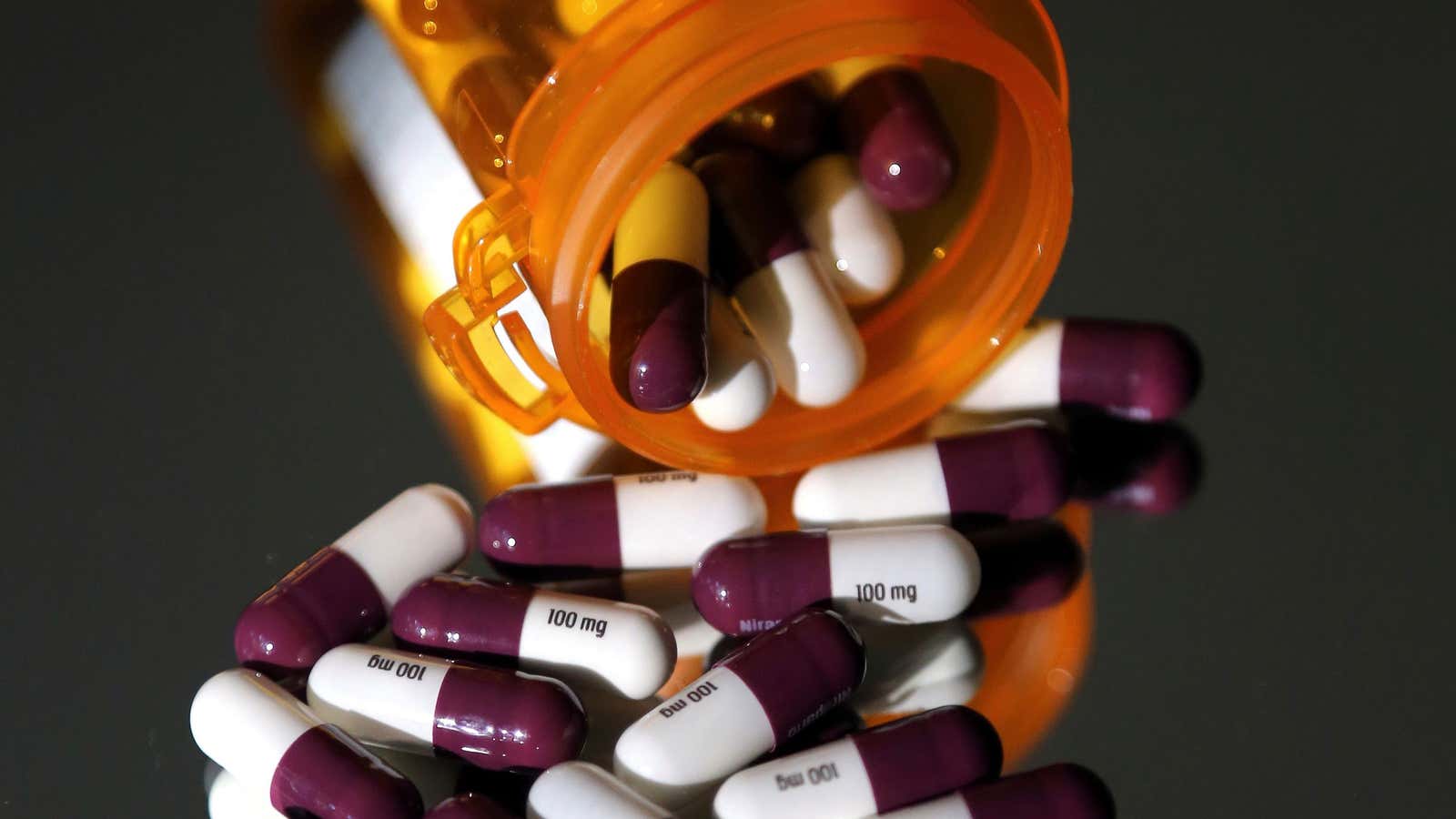If you’re in the US and it feels like you’ve been seeing more drug ads recently, it’s because you have.
According to a study published Tuesday (Jan. 8) by researchers at Dartmouth College, total spending on marketing for condition awareness, health services, lab testing, and drugs ballooned from $17.7 billion annually in 1997 to almost $30 billion in 2016. The vast majority was spent by pharmaceutical companies on marketing prescription drugs—and the investment worked.
In 1997, drug companies spent roughly $17.1 billion on marketing for prescription drugs and any health conditions that may be associated with them. (A relatively paltry $600 million was spent to market condition awareness, health services, and lab testing.) By 2016, that figure was $26.9 billion. Simultaneously, total US spending on prescription drugs skyrocketed from $116.4 billion to $329 billion.
Lisa Schwartz and Steven Woloshin, two physicians at Dartmouth who also study medical communication, combed through data available from three media-monitoring groups and the US National Health Expenditure Accounts. Of all the money spent advertising drugs, the majority went towards efforts to market to doctors. In 1997, the total spending on marketing to physicians was $15.6 billion. By 2016, it was $20.3 billon. Marketing to physicians includes sending paid representatives to doctors’ offices to talk about a drug, free samples of it, or compensating physicians for speaking engagements about the drug. (ProPublica created a tool you can use to see if your doctor has been compensated by pharmaceutical companies.)
Meanwhile, Schwartz and Woloshin estimate that in 1997, pharmaceutical companies spent $1.3 billion on drug ads that targeted consumers. By 2016, that figure was roughly $6 billion. The majority of these ads were television commercials and magazine ads, and across two decades, companies spent the most on marketing drugs related to diabetes, dermatology, and chronic pain.
In 1997, advertisers spent roughly $700 million on condition-awareness campaigns, and ads for health services like hospitals and lab testing. That figure rose to about $3.4 billion in 2016. Schwartz and Woloshin point out that although these ads don’t directly mention a pharmaceutical intervention, they’re often tied to them. In some cases, drug companies sponsored ads that raised awareness for conditions their products can treat.
Previous studies have found that drug sales may increase as a result of advertising—particularly when that marketing targets a lay audience. But there has been no evidence that Americans are getting better medical treatment as a result of targeted drug advertisements.
Globally, every country except the US and New Zealand has outlawed drug ads targeted to consumers. Although drug companies have to follow certain rules set by the US Food and Drug Administration (FDA) in the US—for example, they have to clearly and accurately state the risks associated with their drugs and their efficacy—these regulations are only weakly enforced.
In October of this year, the FDA published a draft of guidelines (pdf) that would require pharmaceutical companies to include more concrete data, like absolute risks instead of relative risks, and data visualizations, in advertisements. The comment period on these guidelines closed in December 2018, and the agency has yet to release a final decision on whether or not to adopt them.
